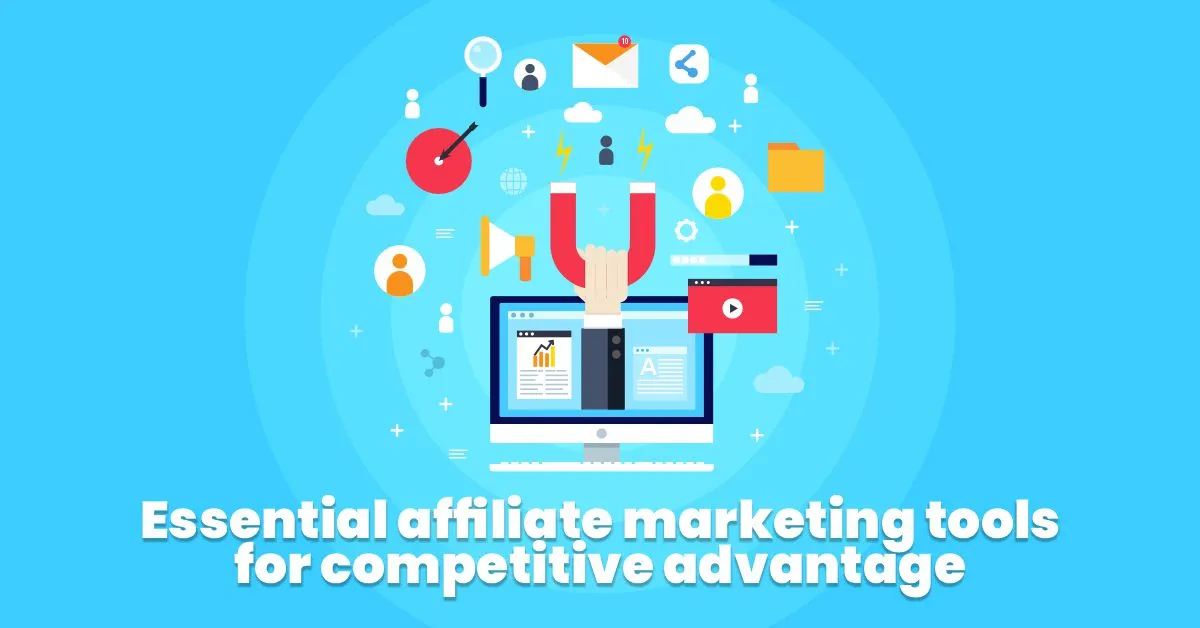Three months ago, I watched a media buyer lose $11,000 in a single weekend because his email platform couldn’t handle a product launch.
He was scaling a VSL funnel for a sleep supplement—traffic was converting at 4.1% cold, and the 14-day email sequence was pulling another 22% in back-end sales. Friday morning, he queued 80,000 emails for the cart-open sequence. By noon, his account was flagged for “suspicious activity,” and the entire list was frozen. Support didn’t respond until Monday. The launch window closed. The ads kept running. The money evaporated.
That’s the moment he learned what every serious affiliate already knows: your email tool isn’t just software—it’s the infrastructure between you and your money.
If it doesn’t deliver to the inbox, automate without breaking, scale without surprise fees, or integrate cleanly with your payment stack, you’re burning cash every single day. And in this game, you can’t afford to bleed margin on preventable failures.
This guide breaks down the 10 best email marketing tools I’ve tested (or watched affiliates scale with) in real campaigns. I’ll show you which ones handle volume, which deliver consistently in YMYL niches, which secretly double your bill at 10K subscribers, and which integrate seamlessly with Stripe, ClickBank, ThriveCart, and Shopify.
No corporate fluff. No “best for small businesses” nonsense. Just the tools that work when your commission check depends on inbox placement and automation reliability.
What Actually Matters When Choosing an Email Tool
Before we dive into the tools, let’s cut through the marketing noise and focus on what moves the needle when you’re running campaigns for ROI.
1. Deliverability (The Only Metric That Actually Counts)
If your emails land in spam, nothing else matters. Not your copy. Not your offer. Not your funnel.
Here’s what to look for:
- Inbox rate above 85% (90%+ is elite territory)
- Built-in warm-up protocols or clear SMTP reputation management
- Domain authentication support (SPF, DKIM, DMARC without needing a developer)
- Shared IP vs. dedicated IP options (matters at 50K+ sends/month)
Most platforms won’t publish real deliverability stats publicly. Check reviews from affiliates running in YMYL niches (health, finance, make-money) where spam filters are strictest. If the tool works there, it’ll work anywhere.
Pro tip: Test inbox placement yourself. Send to Gmail, Outlook, Yahoo, and Apple Mail addresses you control. Check spam folders. That’s your real number.
2. Automation Depth (Beyond Basic Drip Sequences)
A simple autoresponder—”send email 1 after 3 days, email 2 after 7 days”—works for lead magnets. But scaling a real funnel demands decision trees.
Look for:
- Conditional logic (if clicked X, send Y; if ignored, send Z)
- Behavioral triggers (page visit, product view, cart abandonment)
- Tag-based segmentation (assign tags dynamically based on actions)
- Multi-path workflows (split audiences by engagement, purchase history, traffic source)
- Goal tracking (end automation when subscriber completes desired action)
If you’re manually moving people between lists or sending one-size-fits-all broadcasts, you’re leaving 30–40% of potential revenue on the table.
3. Integration Ecosystem (Your Stack Has to Talk)
Manual CSV exports are the kiss of death for performance marketers. Check if the tool integrates natively with:
- Payment processors: Stripe, PayPal, ThriveCart, SamCart, ClickBank, Gumroad
- CRMs: HubSpot, Salesforce, Pipedrive, Zoho
- Landing page builders: Unbounce, Instapage, ClickFunnels, Leadpages
- E-commerce platforms: Shopify, WooCommerce, BigCommerce
- Ad platforms: Facebook Pixel, Google Tag Manager, TikTok Pixel
- Webinar tools: Zoom, Demio, WebinarJam
If you’re copy-pasting data between platforms or hiring a dev to build Zapier bridges, you’re wasting hours and breaking attribution.
4. Scalability & Real Pricing (Hidden Costs Kill Margin)
Most email platforms punish growth. Here’s where they get you:
- Cost per subscriber (some charge for inactive contacts)
- Cost per send (others charge per email, regardless of list size)
- Overage penalties (surprise $200 bill when you hit 10,001 contacts)
- Email send limits (daily caps that choke launch sequences)
- Feature paywalls (automation, A/B testing, or CRM locked behind higher tiers)
Run the math before committing. If you’re sending 4 emails/week to 50,000 people, what’s the monthly hit? What happens when you scale to 100K? When does a dedicated IP make sense?
Example: A tool charging $150/month for 10K contacts might seem cheaper than one charging $0.50 per 1,000 emails. But if you send 200K emails/month, the second option costs $100—and doesn’t penalize list growth.
5. Speed & Ease of Execution
Time is money. If you need a developer to set up a simple abandoned cart sequence, the tool is too complex for fast iteration.
Look for:
- Drag-and-drop editors (build emails in minutes, not hours)
- Pre-built templates (mobile-responsive, tested for deliverability)
- Automation recipes (one-click setup for common workflows)
- API documentation (if you need custom integrations)
- Responsive support (chat, not just ticket systems)
The best tool is the one you can deploy today—not the one you’ll “set up properly next month.”
Top 10 Email Marketing Tools (The Real Breakdown)
Here’s what actually works in the wild—tested in funnels that process real money, ranked by use case and performance profile.
1. ActiveCampaign

Best for: Media buyers, affiliates, and DR marketers running multi-step funnels with deep segmentation, CRM needs, and complex automation.
Why it crushes:
ActiveCampaign is the gold standard for advanced automation. The visual workflow builder rivals enterprise marketing automation platforms, but without the enterprise price tag (yet). Conditional splits, goal tracking, lead scoring, predictive sending, and CRM features that let you manage sales handoffs—all in one place.
Deliverability consistently hits 89–92% when you warm your domain properly. The platform doesn’t choke under volume, and integrations with Stripe, Shopify, WooCommerce, and ClickFunnels are native and reliable.
The learning curve is real. You’ll spend a week getting comfortable with the interface. But once you’re in, you can build sequences that feel like 1-on-1 conversations, dynamically shifting based on behavior, traffic source, purchase history, and engagement patterns.
Where it falls short:
Overkill for simple broadcasts. If you just need a basic autoresponder, you’re paying for features you’ll never use. And the pricing scales aggressively—at 25K contacts, you’re looking at $200+/month.
Pricing:
Starts at $15/month (Starter — basic personalized email marketing) but you need the Plus plan ($49/month) to unlock automation and advanced features. At Pro it starts at $79/month, and the Enterprise plan begins at $145/month.
Real-world use case:
You’re scaling a supplement offer with a 21-day indoctrination sequence. Subscribers are tagged by traffic source (Facebook cold, native retarget, Google search). High-engagement subscribers get upsell emails on day 7; low-engagement get a discount offer on day 10. Buyers are scored and handed to your sales team for high-ticket backend offers. ActiveCampaign handles all of it without breaking.
Verdict: If you’re serious about automation and scaling multi-path funnels, this is the tool. Don’t cheap out—invest the time to learn it.
2. Klaviyo

Best for: E-commerce affiliates, Shopify/WooCommerce promoters, and anyone running product-based offers with post-purchase sequences.
Why it crushes:
Klaviyo was built for transactional emails and e-commerce automation. Native Shopify, WooCommerce, and BigCommerce integrations pull real-time data (products viewed, cart value, purchase history) and let you build surgical segmentation.
Predictive analytics show you “likely to churn” segments, expected customer lifetime value, and optimal send times. Dynamic product recommendation blocks in emails drive upsells without manual work. Abandoned cart sequences, browse abandonment, win-back campaigns, post-purchase cross-sells—Klaviyo automates it all.
Deliverability hovers around 88–91%, and the platform handles high send volume without throttling. If you’re promoting physical products or running an e-commerce funnel, Klaviyo pays for itself in recovered carts alone.
Where it falls short:
Expensive at scale. Pricing jumps fast—10K contacts runs $150/month, 50K is $700+/month. And if you’re not in e-commerce, the tool is over-engineered. Pure info product affiliates will find better value elsewhere.
Pricing:
Free up to 250 contacts and 500 emails. Paid plans start at $20/month (500 contacts), scaling to $60/month (1,500), $150/month (10K), and beyond. Heavy email senders pay more.
Real-world use case:
You’re promoting a skincare funnel with an AOV of $95. Klaviyo sends abandoned cart emails (3-email sequence with a 10% discount on email 2), post-purchase upsells (complementary products based on what they bought), and a 60-day win-back sequence to dormant customers. Revenue from automation alone: 18% of total sales.
Verdict: If you’re in e-commerce or promoting Shopify offers, Klaviyo is non-negotiable. For info products, look elsewhere.
3. ConvertKit

Best for: Creators, course sellers, info product affiliates, and coaches who want powerful automation without the complexity.
Why it crushes:
ConvertKit nails the balance between simplicity and power. The visual automation builder is intuitive—no tech background required. Tag-based segmentation, behavior-triggered sequences, and landing page builder all work seamlessly.
Integrations with Gumroad, Teachable, Podia, Stripe, and ThriveCart are native. Deliverability consistently sits at 87–89%, and the interface doesn’t require a manual. You can build a lead magnet funnel, 5-email nurture sequence, and weekly broadcast system in under two hours.
Where it falls short:
Limited A/B testing (subject lines only, no content or send-time testing). No built-in CRM. If you need lead scoring or complex conditional logic, you’ll outgrow it.
Pricing:
Free up to 1,000 subscribers (broadcasts only, no automation). Paid plans start at $25/month (1,000 contacts), scaling to $50/month (3,000) and $100/month (10,000).
Real-world use case:
You’re promoting a $47 course on email copywriting. Lead magnet is a free 5-day challenge. ConvertKit delivers the daily emails, tags completers, sends a pitch sequence, and integrates with your Gumroad checkout. Weekly broadcasts keep the list warm. Simple, clean, profitable.
Verdict: Best tool for creators and info product affiliates who value speed and simplicity over advanced features.
4. Brevo (formerly Sendinblue)
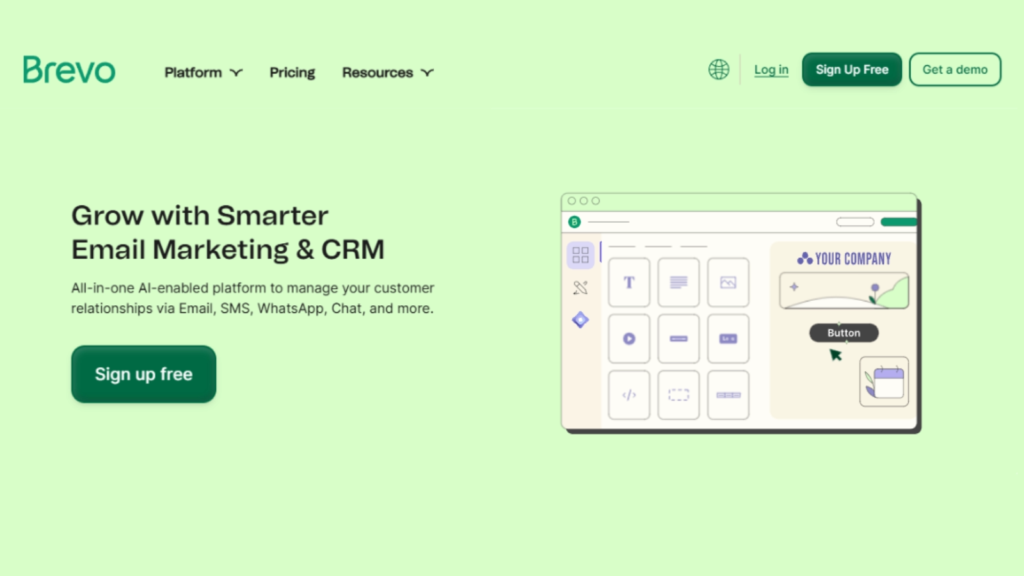
Best for: Budget-conscious affiliates who need email + SMS in one platform, or anyone sending high volume with a smaller list.
Why it crushes:
Brevo flips the pricing model: unlimited contacts on all plans, and you pay per email sent. This is a game-changer if you have a large list but send infrequently, or if you’re just starting and want to avoid per-contact fees.
Built-in SMS marketing, landing page builder, simple automation workflows, and transactional email all in one platform. Deliverability sits at 85–88%—not elite, but solid for the price. The interface is beginner-friendly, and setup takes minutes.
Where it falls short:
Daily send limits on lower tiers (300 emails/day on free plan). Advanced automation feels clunky compared to ActiveCampaign or Klaviyo. SMS features are basic.
Pricing:
Free plan: 300 emails/day, unlimited contacts. Paid plans start at $25/month (20K emails/month), $65/month (100K emails), $99/month (1M emails). No per-contact charges.
Real-world use case:
You’re launching a low-ticket ($17) info product and need to blast a 3-email sequence to 15,000 subscribers. Brevo charges you $25 for 20K sends—total. No per-contact fee. You follow up with SMS to non-openers (another $0.05/SMS). Total cost: under $50.
Verdict: Best value for high-volume senders with smaller budgets. Not the most powerful, but unbeatable ROI.
5. HubSpot Email Marketing
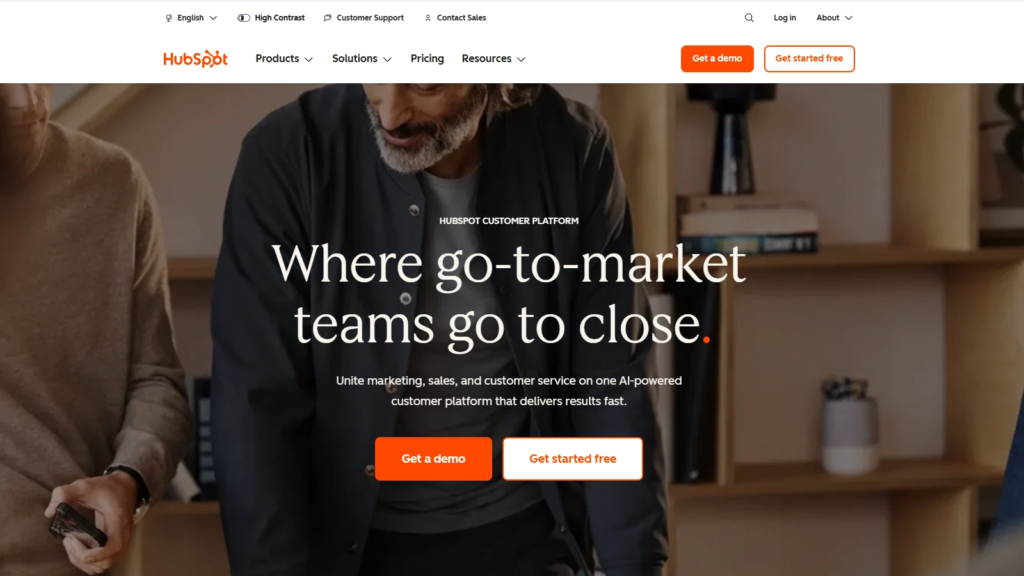
Best for: Affiliates transitioning to full-stack CRM, agencies managing multiple clients, or teams needing sales + marketing alignment.
Why it crushes:
HubSpot is the all-in-one beast. Email marketing, CRM, landing pages, forms, live chat, deal pipelines, reporting dashboards—it’s an entire marketing and sales OS. If you’re scaling beyond solo affiliate work into team operations, HubSpot eliminates tool sprawl.
Email automation is robust (though not as deep as ActiveCampaign), and the CRM is free forever. Deliverability is strong (88–90%), and integrations with Shopify, WordPress, Stripe, and Salesforce are native.
Where it falls short:
Expensive at scale. Free plan caps at 2,000 emails/month. To unlock real automation, you need the “Marketing Hub Starter” ($20/month for 1,000 contacts) or “Professional” ($890/month). And the interface, while powerful, has a steep learning curve.
Pricing:
Free: CRM + 2,000 emails/month. Starter: $20/month (1,000 contacts). Professional: $890/month (2,000 contacts, scales up). Enterprise: custom pricing.
Real-world use case:
You’re running a high-ticket coaching funnel ($2K+ offers). Leads come in via ads, get nurtured with email sequences, qualify via behavior scoring, and get handed to your sales team in HubSpot’s deal pipeline. Email, calls, and deal status all live in one system.
Verdict: Overkill for pure affiliates. Perfect for teams, agencies, or anyone building a sales operation around their marketing.
6. Drip

Best for: E-commerce affiliates and marketers who obsess over behavioral segmentation and granular tracking.
Why it crushes:
Drip is ActiveCampaign’s e-commerce-focused cousin. Hyper-granular tracking (every click, pageview, product view, cart action), visual workflow builder, and deep Shopify/WooCommerce integration. You can segment by lifetime value, product category, browse behavior, and email engagement—all dynamically.
Deliverability is strong (87–90%), and the platform handles complex multi-path workflows without lag. If you’re the type who wants to trigger emails based on “viewed product X but not Y, within 48 hours, on mobile,” Drip is your tool.
Where it falls short:
Pricey for the power. At 5,000 contacts, you’re paying $154/month. And if you’re not in e-commerce, most features are wasted.
Pricing:
Starts at $39/month (2,500 contacts), scaling to $154/month (5,000) and $289/month (10,000).
Real-world use case:
You’re promoting a high-ticket Shopify store ($300+ AOV). Drip tracks every product view, sends browse abandonment emails, upsells based on category affinity, and re-engages customers who haven’t purchased in 90 days with dynamic product recommendations.
Verdict: Best for e-commerce marketers who need surgical segmentation. Info product affiliates should skip it.
7. GetResponse
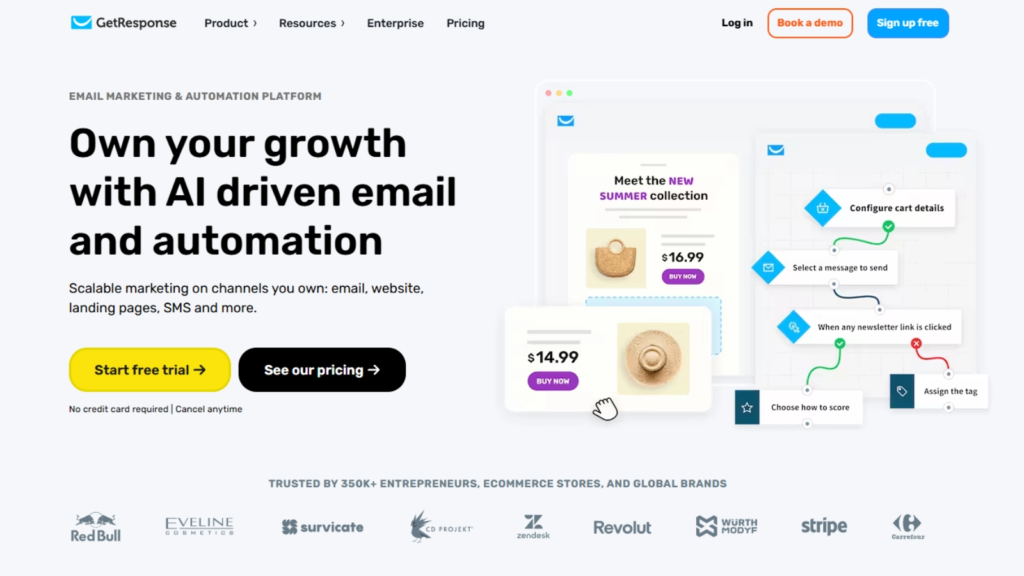
Best for: Affiliates running webinar funnels, product launches, or anyone who wants email + landing pages + webinar hosting in one platform.
Why it crushes:
GetResponse bundles email marketing, landing page builder, webinar hosting, and conversion funnels in one tool. If you’re running a webinar-to-offer funnel, you can build the registration page, host the webinar, send reminders, and follow up with a 7-day email sequence—all native.
Deliverability sits at 86–89%, and the automation builder handles most use cases without frustration. Templates are mobile-responsive, and the drag-and-drop editor is fast.
Where it falls short:
Webinar features are decent but not as polished as dedicated tools (Zoom, Demio). Email interface feels dated compared to newer platforms.
Pricing:
Starts at $19/month (1,000 contacts), scaling to $59/month (5,000) and $119/month (10,000). Webinar features require the $99/month “MAX” plan.
Real-world use case:
You’re promoting a $297 course with a free webinar funnel. GetResponse hosts the webinar, sends 3 reminder emails, delivers the replay, and follows up with a 7-day pitch sequence. One platform, one bill.
Verdict: Best for webinar-based funnels. If you don’t use webinars, you’re paying for features you’ll never touch.
8. Mailchimp
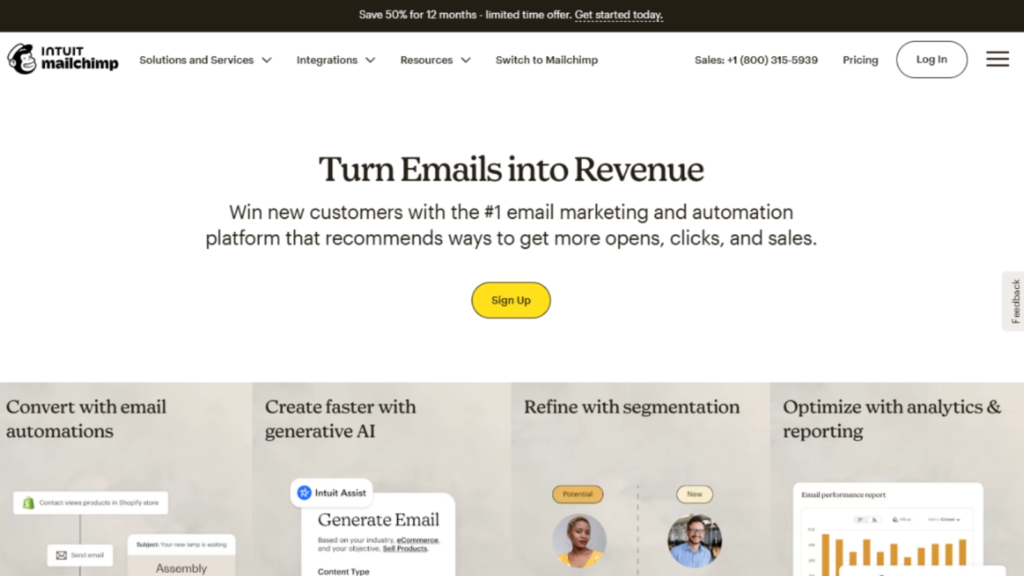
Best for: Complete beginners or side-hustlers testing their first funnel with a tiny budget.
Why it used to crush (but doesn’t anymore):
Mailchimp was the OG email tool. Free plan, simple interface, integrations with everything. But it’s been surpassed. The free plan caps at 500 contacts and 1,000 emails/month—barely enough to test. Automation requires paid plans. Deliverability has slipped (83–86%) as the platform prioritized growth over infrastructure.
Where it falls short:
Everything. Pricing scales faster than competitors. Automation is weak. Deliverability is average. Better options exist at every price point.
Pricing:
Free: 500 contacts, 1,000 emails/month. Essentials: $13/month (500 contacts, includes automation). Standard: $20/month (500 contacts, adds A/B testing). Scales to $350/month at 10K contacts.
Real-world use case:
You’re testing your first lead magnet funnel with 300 subscribers. Mailchimp gets you started for free. But the second you need real automation or scale, you migrate.
Verdict: Only use this if you’re brand new and testing. Migrate the second you’re serious.
9. AWeber

Best for: Old-school affiliates, small businesses, and anyone who wants reliable, no-frills email without complexity.
Why it still works:
AWeber has been around since 1998, and it shows—in a good way. Rock-solid deliverability (88–91%), simple autoresponders, drag-and-drop editor, and integrations with every major platform. It’s not flashy, but it doesn’t break.
If you need broadcasts, basic sequences, and reliable inbox placement, AWeber gets out of your way. No learning curve. No feature bloat. Just send emails.
Where it falls short:
Limited automation logic. No CRM features. Interface feels dated. If you need conditional workflows or behavioral triggers, you’ll outgrow it fast.
Pricing:
Free up to 500 subscribers (one list only). Paid plans start at $15/month (500 contacts), scaling to $25/month (2,500) and $145/month (25,000).
Real-world use case:
You’re running a straightforward affiliate funnel—lead magnet, 5-email nurture, weekly broadcasts. AWeber delivers without drama. No advanced features needed.
Verdict: Best for simple funnels where reliability > sophistication.
10. Constant Contact
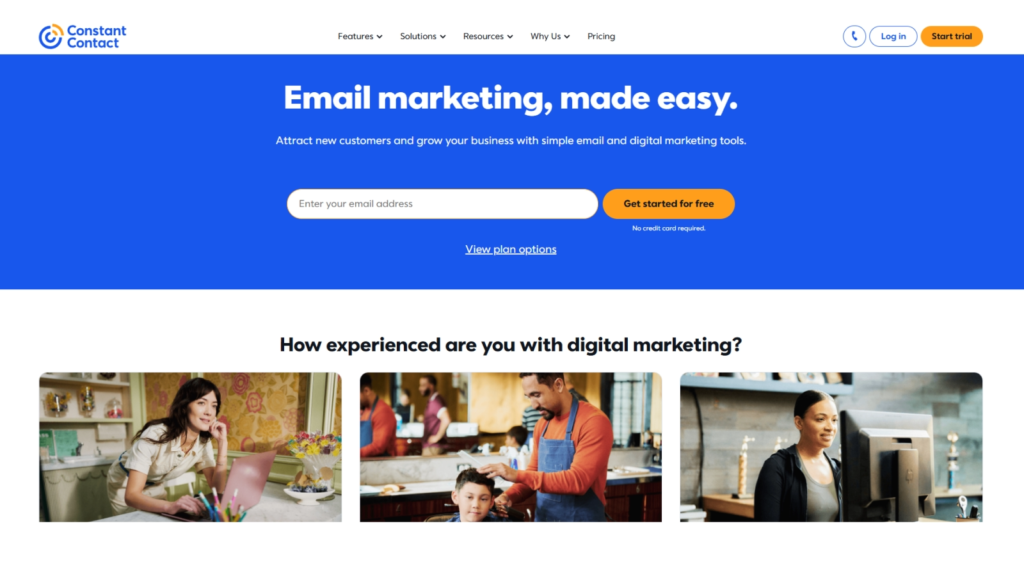
Best for: Local businesses, event promoters, nonprofits, or anyone who needs email + event management in one tool.
Why it exists (but isn’t for affiliates):
Constant Contact is built for brick-and-mortar businesses and event organizers. Event registration, surveys, social media posting, and email in one platform. Deliverability is average (84–87%), and automation is basic.
Where it falls short for affiliates:
Everything. Weak automation. Poor integrations with affiliate stacks. Pricing is high for what you get. No CRM. No behavioral triggers.
Pricing:
Starts at $12/month (500 contacts), scaling to $35/month (2,500) and $335/month (25,000).
Real-world use case:
You’re promoting local events or workshops. Constant Contact handles registration and sends reminder emails. But for pure affiliate funnels? Skip it.
Verdict: Not built for performance marketers. Only consider if you’re running events.
Comparison Table: Key Metrics at a Glance
| Tool | Best For | Deliverability | Starting Price | Automation Depth | Standout Feature |
| ActiveCampaign | Multi-step funnels, CRM needs | 89–92% | $29/mo (1K) | ⭐⭐⭐⭐⭐ | Advanced conditional workflows |
| Klaviyo | E-commerce, Shopify affiliates | 88–91% | $20/mo (500) | ⭐⭐⭐⭐⭐ | Predictive analytics |
| ConvertKit | Creators, info products | 87–89% | $25/mo (1K) | ⭐⭐⭐⭐ | Simplicity + power balance |
| Brevo | High volume, tight budgets | 85–88% | $25/mo (20K sends) | ⭐⭐⭐ | Unlimited contacts |
| HubSpot | Teams, CRM integration | 88–90% | $20/mo (1K) | ⭐⭐⭐⭐ | All-in-one CRM + email |
| Drip | E-commerce behavioral tracking | 87–90% | $39/mo (2.5K) | ⭐⭐⭐⭐⭐ | Granular segmentation |
| GetResponse | Webinar funnels | 86–89% | $19/mo (1K) | ⭐⭐⭐ | Built-in webinar hosting |
| Mailchimp | Complete beginners | 83–86% | Free (500) | ⭐⭐ | Brand recognition |
| AWeber | Simple, reliable broadcasts | 88–91% | $15/mo (500) | ⭐⭐⭐ | No-frills reliability |
| Constant Contact | Local businesses, events | 84–87% | $12/mo (500) | ⭐⭐ | Event management |
How to Match the Right Tool to Your Funnel Type
Choosing the wrong tool costs you time and money. Here’s how to match your campaign type to the platform that actually fits.
Want to know which tools really make a difference in an affiliate’s performance?
Check out our complete list of essential tools for those who want to grow efficiently:
The tools every successful affiliate should be using
Lead Gen Funnels (Free Download → Email Nurture → Offer)
Best tools: ConvertKit, AWeber, Brevo
Why: Simple automation, fast setup, low cost. You don’t need advanced segmentation—just reliable delivery and basic sequences.
Product Launch Sequences (Countdown → Scarcity → Cart Close)
Best tools: ActiveCampaign, GetResponse, ConvertKit
Why: You need automation that handles time-based triggers, conditional logic (openers vs. non-openers), and high-volume sends without throttling.
E-Commerce/Physical Products (Abandoned Cart → Upsells → Win-Back)
Best tools: Klaviyo, Drip, ActiveCampaign
Why: Native Shopify/WooCommerce integration, behavioral tracking, dynamic product recommendations, and transactional email reliability.
VSL + Checkout Flows (Ad → VSL → Order Form → Follow-Up)
Best tools: ActiveCampaign, Brevo, ConvertKit
Why: Integration with ThriveCart/SamCart, tag-based segmentation (buyers vs. non-buyers), and sequences that nurture abandoned checkouts.
High-Ticket/Sales Team Handoff (Nurture → Qualify → Sales Call)
Best tools: HubSpot, ActiveCampaign
Why: CRM features, lead scoring, pipeline management, and automation that hands warm leads to your sales team with full context.
Common Mistakes & How to Avoid Them
1. Skipping Domain Warm-Up
Blasting 50,000 emails from a fresh domain is the fastest way to land in spam. Warm up gradually: start with 100–200 emails/day to your most engaged contacts, increase 20% daily for 2–3 weeks.
2. Choosing Based on Price Alone
A $15/month tool that delivers 80% inbox rate costs you more than a $100/month tool that hits 92%. Run the math on lost conversions, not just platform fees.
3. Over-Complicating Segmentation Without Data
Don’t build 47 segments on day one. Start with 3–5 (buyers, engaged non-buyers, cold subscribers), track what converts, then refine.
4. Ignoring Mobile Optimization
70%+ of emails are opened on mobile. If your templates break on iPhone, you’re losing half your list. Test every email on mobile before sending.
Bottom Line
The best email tool is the one that delivers to the inbox, automates without breaking, scales affordably, and integrates with your stack. For most affiliates: ActiveCampaign if you need power, ConvertKit if you value simplicity, Klaviyo if you’re in e-commerce, Brevo if you’re on a budget.
Action Steps Now
- Audit your current tool: Check inbox rate (send test emails), review last month’s bill, confirm integrations work.
- Pick one tool from this list that matches your funnel type.
- Set up a 7-day test: Migrate 1,000 contacts, run a simple sequence, measure opens/clicks/conversions.
- Commit or switch: If deliverability and ROI improve, migrate fully. If not, try the next tool.
- Warm your domain properly: Don’t skip this—2 weeks of warm-up saves months of spam folder hell.
- Stop losing sales! Discover the tools every successful affiliate uses to dominate the market.
FAQ
Which email marketing tool has the best deliverability?
ActiveCampaign and AWeber consistently show the highest deliverability rates (89-92% inbox placement) when domains are properly warmed. Klaviyo follows closely at 88-91% for e-commerce sends.
Deliverability depends heavily on sender reputation, list quality, and warm-up protocols, not just the platform itself. Test your own inbox rates by sending to multiple email providers (Gmail, Outlook, Yahoo, Apple Mail) and checking spam folders manually.
What’s the cheapest email marketing tool for high volume?
Brevo (formerly Sendinblue) offers the best value for high-volume senders with its pay-per-send model and unlimited contacts.
At 100K emails/month, you pay $65 total—no per-contact fees. This beats per-subscriber pricing models when you have large lists but send infrequently or in bursts.
For sustained high-volume sends (500K+/month), consider transactional providers like Mailgun or SendGrid with API-based pricing.
Which tool is best for affiliate marketing funnels?
ActiveCampaign is the top choice for complex affiliate funnels requiring multi-path automation, behavioral triggers, and CRM integration.
ConvertKit works better for simple info product funnels prioritizing speed over complexity. Klaviyo dominates if you’re promoting e-commerce or Shopify offers with post-purchase sequences.
Match the tool to your funnel complexity—don’t pay for advanced features you won’t use, but don’t cheap out on automation if your margins depend on segmentation.
Do I need a dedicated IP for email marketing?
Dedicated IPs become valuable once you’re consistently sending 50K+ emails per month. Below that volume, shared IPs (used by most platforms) provide better deliverability since they benefit from pooled reputation.
Dedicated IPs require consistent send volume to maintain reputation—sporadic sending on a dedicated IP can hurt deliverability.
If you’re in a high-risk niche (YMYL, supplements, make-money) or sending 100K+ emails weekly, a dedicated IP with proper warm-up is worth the investment
How long does it take to warm up an email domain?
Proper domain warm-up takes 2-3 weeks minimum. Start by sending 100-200 emails daily to your most engaged subscribers, then increase volume by 20% daily.
Rushing this process by blasting large volumes immediately flags spam filters and tanks deliverability for months. Most platforms offer automated warm-up protocols or integrations with warm-up services like Warmbox or Mailreach.
Never skip warm-up, even if migrating from another provider—your domain reputation starts fresh on each platform’s infrastructure.
Can I switch email marketing tools without losing subscribers?
Yes, but migration requires careful planning. Export your list with all custom fields and tags, import to the new platform, then run parallel systems for 1-2 weeks to verify automations work correctly.
Notify subscribers about potential duplicate emails during transition. Most importantly, warm up your sending domain on the new platform before full migration to maintain deliverability.
Budget 3-4 weeks for a clean migration if you have complex automations.
What’s better for e-commerce: Klaviyo or Drip?
Klaviyo wins for most e-commerce use cases due to superior Shopify/WooCommerce integration, predictive analytics, and better template library.
Drip offers more granular behavioral tracking and is slightly cheaper at mid-tier volumes (5K-15K contacts). Choose Klaviyo if you prioritize ease of use and built-in intelligence; choose Drip if you’re a data-obsessed marketer who wants maximum segmentation control.
Both handle abandoned cart and post-purchase sequences well—the difference is in analytics depth and price scaling.


